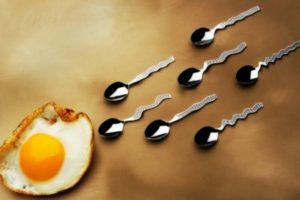Which genes are transmitted to the child from mom and which from dad: you will be surprised

It’s no secret that parental genes and their lifestyle affect the appearance and health of the child. But which genes are transmitted to the child from the mother, and which from the father? This is a matter studied by genetics. We think you heard the expression “all in the mother” or “all in the father.” Scientists say this is a false statement. Each parent passes the child half of their genes. But father’s genes are more aggressive than mother’s, therefore they more often become dominant, that is, they manifest themselves.
Child gender
Sperm are responsible for the gender of the child. The eggs always carry the “girl” X chromosome, and the sperm are either the X chromosome (then the baby will be female) or the Y chromosome (and then the baby will be born). Scientists have noticed another fact, if the pope has many brothers, the probability of having a son increases, if he has many sisters, then more daughters will be born. Few men contain almost the same number of sperm with X and Y chromosomes.
External signs
The male Y chromosome contains fewer genes than the X chromosome. Moreover, a certain amount of the Y chromosome is responsible for the formation of male sexual characteristics. Therefore, most of the appearance of the sons will receive from their mother. In the case of the birth of a girl, she receives the same amount of genes from both parents, so her appearance will not come out in advance.
Dental condition
Although both parents can transmit the structure of the jaw and the shape of the teeth, Dad is responsible for the health of the teeth. So if he often visits the dentist, then the children will be frequent “guests” in the dental clinic.
Mind
Intelligence is passed on to sons by their mother. Daughters inherit the mind from both father and mother. But only 40% of the intellect is transmitted genetically, the remaining 60% depend on education and training. So no matter how smart parents are, if their children do not develop, then their intelligence will be appropriate.
Addiction to mental illness
The older Dad, the worse his sperm and the set of genes in sperm. This factor increases the child’s risk of contracting mental disorders. Scientists have found that children born to fathers aged 45 and older are more prone to suicide and learning disabilities.
Addiction to disease
Dads with coronary heart disease can pass it on to their sons. Infertile men who have decided on IVF pass on their son a predisposition to this problem. Hemophilia (poor blood coagulation), Duchenne myodystrophy (progressive muscle dystrophy), and autism are most often passed on by women to their sons. In this case, even if the mother carries a defective gene responsible for these ailments, they may not appear in daughters. The fact is that only one X chromosome from the mother is transmitted to the son, two from both parents to the girls. Therefore, the sons have nothing to replace the bad gene.
Height and weight
In almost 40% of people, a tendency to be overweight or thin is transmitted from parents. Moreover, this can be both my mother’s “inheritance” and my father’s. That’s just a predisposition to harmony is less likely to be transmitted to children than a tendency to gain weight.
From 60 to 80% of a child’s growth is determined by the genes of his parents. The rest depends on lifestyle and quality of food. Scientists also noted that when the parents’ growth is about the same, their youngest children will be lower than the older ones. You can find out your child’s growth in the future using two formulas.
Eye color
Brown eyes most often dominate. But a child may appear with bright eyes, if the brown-eyed parent has a recessive gene for bright eyes. At the same time, the appearance of a brown-eyed baby in two blue-eyed parents and vice versa.
Dimples
If one of the parents has dimples on the cheeks, then it is more likely that the child will have them too. It’s just a dominant attribute.
Curly or straight hair
If both parents have curls, then the child is likely to be born curly. If both parents have straight hair, then the child will have straight hair. A child can have straight hair if both parents have straight hair in recessive genes. If one of the parents is curly, then the hair may be wavy.
How to predict the appearance of the baby?
Each family has dominant genes. For example, all family members have potato nose or full lips, most likely this gene will dominate your child. Carefully look at the photos of the husband’s relatives and your own, so you can approximately understand what facial features your baby may have.



